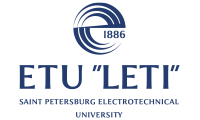Porous silicon containers with various physical and chemical properties can deliver drugs when injected intravenously.
The strategy of targeted or directional drug delivery (TDD) is a modern way to increase the effectiveness of medicine. Among the topical issues of TDD is exposure to drugs for organs behind histochematic barriers. Such organs (e.g. internal ear organs) are special in a way that their intracellular structures cannot be penetrated by drugs in the bloodstream. The focal point of the technology is the development of disperse transport systems for targeted biodistribution of pharmaceuticals administered parenterally (intravenously).
ETU “LETI” Department of Micro and Nanoelectronics, Almazov National Medical Research Centre and Pavlov First Saint Petersburg State Medical University have been researching the ways to use porous silicon in carrier containers with various physical and chemical properties the best suited for particular tasks of targeted drug delivery.
“Silicon-containing compounds, in particular, porous silicon (por-Si) are a known material for the construction of carrier containers. The technological advantages of this substance for biomedical tasks are ease of manufacturing, the possibility of creating dispersed structures in a wide range of parameters (dimensions, surface morphology, porosity, pore size, specific surface area, physicochemical composition), multifunctional use (as a carrier matrix, marker, sensor, catalyst), biocompatibility (low toxicity), and biodegradability” according to Yulia Spivak, Engineer and Associate Professor at the Department of Micro and Nanoelectronics.
The researchers have developed a porous silicon (por-Si) particle synthesis technology that starts with anodic etching of single-crystal silicon, and subsequent ultrasonic treatment and homogenization. Technological conditions of synthesis were selected in such a way as to obtain a surface with hydrophilic properties. This created the best conditions for fixing water-soluble molecules of pharmaceutical compounds via hydroxyl groups.
Porous silicone (por-Si) particles in three size ranges 60−80, 250−300, 500−600 nm were obtained for drug delivery to the inner ear. The researchers have carried out a complex characterization of particles by scanning electron microscopy, photon cross-correlation spectroscopy, and X-ray photoelectron spectroscopy, etc.
The method of por-Si particle drug functionalization was tested on drug called gentamicin – it was impregnated onto the particle surface. In vitro biocompatibility models were applied to demonstrate low toxicity of the samples at concentrations used for intravenous administration. The systemic in vivo biodistribution showed that introduced nanoobjects were found in the liver and heart tissues without significant changes in shape or size and predominantly in the oxidized state, which is a tell-tale sign that porous particles with such parameters are fit for disperse intravenous administration. It was experimentally proven that porous silicon nanoparticles increase penetrability through the hematolabyrinthine barrier which allows to administer antibiotics to the inner ear intravenously.
The researchers demonstrated that modified conditions of por-Si nanoparticle synthesis are promising in terms of container carrier parameter design, suitable for specific tasks of targeted drug delivery.
“The manufacturing technology is low-cost, simple and does not require expensive equipment. It is possible to use single-crystal silicon that was rejected in silicon microcircuit fabrication. The fact that we know the nuances of this technology, as well as physical and chemical processes taking place when manufacturing porous silicone nanoparticles allows us to customize them for each drug therapy task” as explained by Yulia Spivak who developed the technology.
The technology is ready to be implemented. The only thing left is pre-clinical and clinical trials. Medical workers already confirmed relevance of the technology.
The development is consistent with ETU “LETI” priority R&D area BIOINTERFACE.






